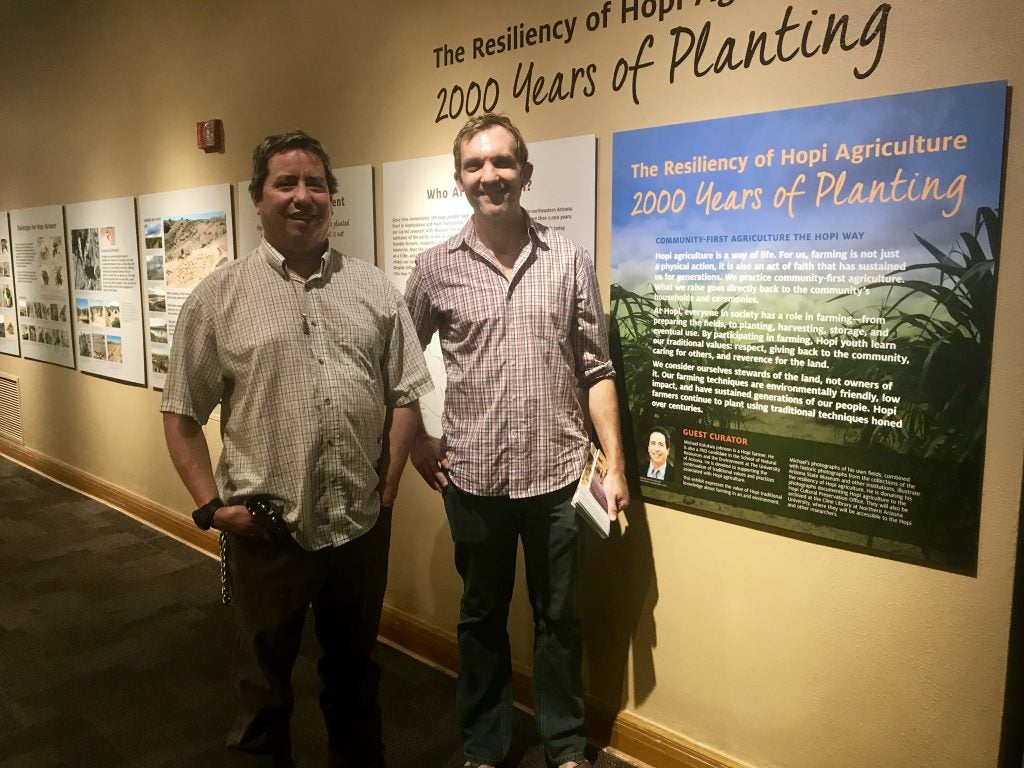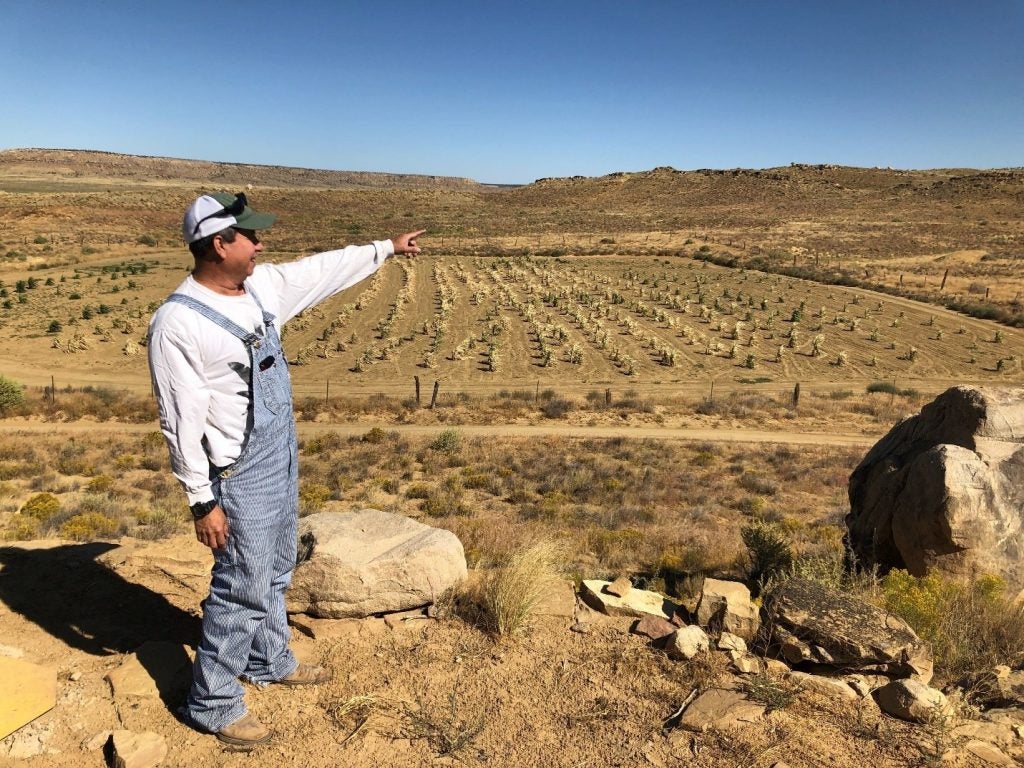What 2,000 years of traditional Hopi farming in the arid Southwest can teach about resilience
When Michael Kotutwa Johnson was 8 years old, he began spending much of his time on the Hopi reservation in Arizona with his grandfather, who taught him how to farm.
For more than 2,000 years, the Hopi have been farming without irrigation in an area of Arizona that receives less than 10 inches of rain a year.
“Hopi is a testament to doing a lot with a little,” Mike says. “A raindrop can raise a whole plant.”
Mike went on to study science and public policy in college and recently earned a Ph.D. in natural resource management at the University of Arizona. He is now living back on the Hopi reservation, farming and working as a research associate at the Native American Agricultural Fund. The fund’s mission is to promote the sustainability and viability of Indian agriculture in America, and Mike’s personal mission is to bring more Hopi back to farming.
I had the opportunity to talk to Mike about the Hopi’s unique way of farming and how it can inspire other farmers seeking to become more resilient to climate change and increasingly finite water supplies. Here’s what he shared with me.

What is the Hopi way of farming?
We use the tools we were given to survive: water, a planting stick and our seeds that we plant. We don’t use any sort of pesticides or herbicides, and we don’t irrigate our fields. It all occurs naturally through rain or through the amount of moisture we get in the wintertime.
And we farm on one- to two-acre fields, not the 2,000-acre farms of the Midwest.
All these terms for new farm practices — regenerative agriculture, precision agriculture — we’ve been doing for 2,000 years. We just didn’t call it that. We are still planting some of our fields by hand today to remember where we came from.
That must be rewarding, but also quite challenging.
Planting with a stick in a dry environment is humbling, because before you put seed in the ground you know how hard it’s going to be. It was our faith-based agriculture that allowed us to plant.
But we’ve still adapted.
Over time we’ve developed drought-tolerant varieties of beans — lima beans, tepary beans, string beans — and more than 21 different varieties of corn. This has helped us weather droughts.

How do the Hopi view water and what can we learn from it?
Today people look at water as a commodity. They turn on the tap and there it is, boom.
The Hopi would say these people lose the spiritual significance of what water is about, because in three words, water is life. Without it, we wouldn’t be here. We wouldn’t be able to grow anything. There would be no oxygen. So water is alive.
What does that perspective mean for water conservation?
To conserve, you’ve really got to take it to that level — thinking of water as more than a commodity. I know that’s impossible for probably 99.9% of people who don’t farm like the Hopi do. But I just don’t think there’s a solution until we really understand the value of water not only from an economic standpoint, but from a spiritual point of view. To this Hopi farmer, resilience means working with the land instead of against it. Share on X
How do the Hopi manage through droughts, which are becoming the norm in the Southwest?
Because our agricultural system is so old, we’re used to things like droughts and crop loss. We have psychological ways to overcome those challenges.
The other thing is we don’t have a lot of money invested, so we don’t panic as much as other farmers. We don’t pay for the rain. We don’t put money into infrastructure. We manage with what we have.
What other Hopi principles can we learn from to make agriculture more resilient to climate change?
An important principle is the concept of stewardship versus ownership — not taking more than what the land gives, and working with the land instead of against it.
We have this partnership with the environment that I believe we need to return to. We need to listen to the land, look at it, observe it, and we’ll get a lot of our answers from that.
It’s not the economics of what we’re doing but the culture of stewardship that sustains us. Not just the Hopis – all of us.












One Comment
How do I plant in Doney park area ?